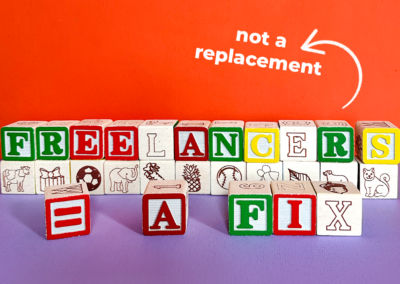Start with diversity, and innovation will come naturally.
When I am working with an organization that wants to improve their innovation capabilities, I encourage them to start by embracing diversity as a core value. Some leaders are surprised at this recommendation and want to know why we don’t start with technology, or why embracing innovation isn’t the first step. I walk them through a large body of research that demonstrates how companies with high levels of diversity are more likely to be more financially successful and more innovative than their counterparts. In fact, one study found that employees from diverse organizations were 45% more likely to report revenue growth and 70% more likely to report that they had grown into a new market.
Diversity is not just more likely to result in innovation, it is a necessary component of innovation. In his call for collisions between disparate ideas, Steven Johnson detailed how the majority of the disruptive innovations that have occurred in the modern era came from unlikely collaborations, or collisions. It’s easy to see how in a workplace where everyone thinks the same and has the same experiences, it is far less likely that these important collisions will occur.
More than sparking collisions, organizational psychologist, Adam Grant, says we need to invite in, rather than exclude, voices that disagree. Having a workforce made up of people with different ways of thinking and different experiences is required to uncover those voices and avoid the groupthink that comes from a monochromatic work environment.
We can’t have true diversity without room for autonomy.
Autonomous work, where workers have greater power to manage their own work life, perhaps once considered a way-in-the-future-of-work trend by many, has taken center stage in the pandemic. The past eighteen months gave us some of our first widespread tastes of autonomy, as workers stayed home and worked without in-person supervision or the structure of a traditional office.
As we might expect, without their bosses watching so closely over them, many employees experimented with new work modes, and in new ways. Possibly more surprising, this forced autonomy also led employers to innovate—especially in their hiring. Companies started looking outside their usual places for new hires; bringing on workers from new pipelines and talent pools, and supporting them in working in a way that accommodated their lives, in the midst of a pandemic.
This has resulted in a joint shift in expectations. Companies now aren’t looking for the typical candidate profile to fill a role, and candidates aren’t looking for the typical structures to work in. Combined, this is creating the flexibility to align jobs with the best people and let them work in the way that is best for them. This is just the sort of flexibility required to fulfill the promise of greater levels of diversity.
Start today. Expand tomorrow.
In a future that is being written day by day, it could be easy to get bogged down in deciding which of the many aspects of workforce autonomy are right for you. What I’ve learned is that letting go of the specifics and following these three principles will ease the feeling of being overwhelmed and empower a culture of flexibility.
Create a culture of collaboration.
Having voices that disagree will only be useful if everyone feels empowered to speak up. As leaders, we must invite everyone to collaborate regardless of their position, rank or department. At large organizations this often means launching some sort of collaborative innovation tool that showcases each employee’s contribution, but not their role, identity, or status. In organizations of any size, allowing for anonymous submissions will mean that each contribution arrives separate from stereotypes and judgments.
This separation can be fostered in many ways with a more autonomous workforce. Whether it’s a culture that supports working on a schedule that’s best for you, working with less oversight, having less meetings, or any number of other tools of an autonomous workforce, empowering your workers to take ownership of and control over their work will create a culture of safety for your team.
As one of IdeaScale’s DEI leaders, Chrystal Banks, explained it, “Autonomous work allows a certain level of anonymity amongst colleagues. There are fewer opportunities for preconceived notions or judgments to exist.”
Create a culture of flexibility.
Having a diverse workforce will only be useful if everyone feels empowered to work where, when, and in the language that works best for them. Digital transformation means that we can collaborate asynchronously across borders so the typical 9-5 in a specific time zone isn’t necessary. This ability to self-define is highly valuable and allows different workers to adopt different approaches, which means you can expand the profile of the candidates you are looking for.
As Erin Simpson, another of our DEI leaders, shared, “Fostering an autonomous workforce is about empowering employees and valuing their humxnity.” As leaders, it is up to us to be sure that the flexible options we provide are built into the culture. While womxn have historically valued and taken advantage of flexible schedules, the ability to work from home (on a variety of schedules) benefits any worker for whom commutes and in-office accommodations may be daunting. This could include differently abled workers, neurodivergent workers, and parents and care-givers of all genders.
Create a culture of results.
Having a diverse workforce will only be useful if everyone feels empowered to work in the ways that work best for them. Too much guidance can often stifle creativity and efficiency. Allowing people to develop their own methods and procedures to obtain the desired results can mean more productivity and satisfaction for everyone.
As leaders, we need to foster a culture of results— one in which people are evaluated based on the results they achieve, as opposed to the methods they use to achieve them. Far from a hands off approach, this type of leadership connects with workers in new ways and provides the whole team with a never-ending supply of methodologies for achieving the desired results, in any situation. This will be especially true if you are actively working to create that culture of collaboration!
Jessica’s company Socials: Twitter, LinkedIn, Facebook
Editor’s Socials & Website – LaKay Cornell: Instagram, Twitter, LinkedIn, Website



